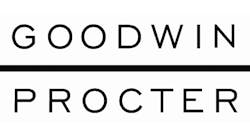Under Federal and state law, it is possible to address multiple complaints about the safety and efficacy of a product in a single class action lawsuit. When courts determine that plaintiffs' claims are sufficiently similar to move ahead in a single class action proceeding, the result can expose manufacturers to enormous financial risk.
However, a recent Supreme Court case exposes new ways to prevent plaintiffs from rolling their cases into a single, high-cost suit, and gives manufacturers new tools to fight these motions at the earliest stage of trial.
Requirements for a Class Action Lawsuit
For a court to certify a class action lawsuit, federal rules require the plaintiff to show that questions of law or fact common to the claims of all class members predominate over questions affecting individual claims. Identifying key similarities among all plaintiffs is often critical to whether a court permits a case to proceed as a class action.
Historically, manufacturers of building products have been exposed to class actions. Courts have often glossed over individual differences in the application of building manufacturers' products, deeming them similar simply because they were incorporated into structures and not used on their own.
Broad class actions alleging universal product failure, or alleging actual or potential adverse health effects stemming from building products are frequently filed, and some have been permitted to proceed, often overlooking material differences from application to application.
Recent Developments in the Law
The Supreme Court's recent ruling in Wal-Mart Stores, Inc. v. Dukes clarifies the law in a way that will make it harder for plaintiffs to engineer broad class action lawsuits. While the details of the ruling are complex, as a practical matter, defendants are now better equipped to prevent class certification if they can show that non-common issues affect the claims of individual plaintiffs.
In practice, to prevent a class action manufactures must find new ways to harvest evidence differentiating one claim from another, and identify narrow patterns among reported defects. An improved customer service function that is focused on mining for this critical data should serve as the front line in combating class action lawsuits.
Building a Trail of Differentiating Evidence
Building products manufacturers have a unique opportunity to develop a trail of differentiating evidence through the prolonged and back-and-forth relationship between manufacturers and the end users of their products.
Consumers of building products -- ranging from "do-it-yourselfers" to those relying on contractors or installers -- make use of the products in widely different settings and over long periods of time.
Opportunities for Communication
When problems arise, there are multiple opportunities for contact and communication between the customer, the installer, and the manufacturer.
Improving and encouraging consumers to connect with customer support around reported issues provides a fertile opportunity for feedback on the performance of their products under different conditions.
Tracking and analyzing patterns in this feedback can also suggest new information about a product -- for example, that a product's function is affected by certain environmental or other factors in a specific way, including the installation process or specific facts about the individual's dwelling. Likewise, developing a robust process for responding to consumer complaints (including investigation of individual homeowners' circumstances and remedying legitimate complaints) can generate an individualized body of evidence.
To the extent that this process generates an increasingly-differentiated data set of product-use outcomes based on differing circumstances, and communications between and among manufacturers, installers, and homeowners, it has great potential to generate the kind of evidence that should prevent class certification under the Dukes ruling.
Five Take-Away Points
- Develop a robust customer support network and ensure staff diligently document different circumstances (such as weather, installation techniques, location, etc.) that may affect a product's behavior.
- Search for patterns. Is temperature affecting product behavior? Location? Installation technique?
- Leverage relationships with customers to gather additional support for patterns of differential product behavior.
- Always explore the potential individualized reasons for a claimed defect or damage. Even evidence developed in a small, individual lawsuit may be useful in preventing a future class action.
- Include legal counsel when developing a customer support protocol to insure sufficient data is being mined; loop in counsel as early as possible if patterns emerge around reported defects or damage.
Mark Raffman is a partner in Goodwin Procter's Business Litigation Practice, concentrating on complex litigation, product liability, toxic tort and mass casualty litigation. He is a member of the firm's executive committee.
Andrew Hudson is an associate in Goodwin Procter's Litigation Department and a member of its Business Litigation Practice.



